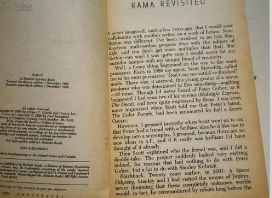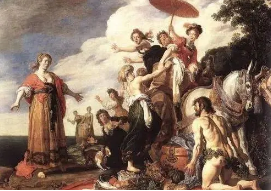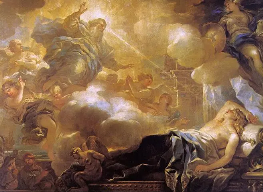Western novel narration on the basis of Romanticism culture
4 min read
1. Why Romanticism became the origin of modernity Berlin, for his part, failed to define the Romantic movement from the 18th century onward. In my opinion, if Romanticism is regarded as the cultural form from which modernity originates, it can be understood as: understanding and expressing the world in an observant way, and hoping that the observant will surpass the reality. Therefore, the agitation of emotion, the magnificence of imagination, the egocentrism, the legendary narration and the independent language all constitute the way of understanding and expressing the world.
2. Romanticism has established the aesthetic characteristics of Western literature.
In a sense, Romanticism lays the foundation of modern western novels, and conversely, Romanticism determines the basic aesthetic character of modern western novels. The development of realism here is only to make the more bizarre plots and exaggerated characters of Romanticism more realistic. Critical realism has always been regarded as a model of Western novels that can be used for reference by Chinese literary and art theories, which is of course influenced by Marxist classical writers. In fact, critical realism is only the portrayal of the capitalist contradictions in the 19th century. In the history of modern western novels, its realistic critical attitude is a special case. The western modern novel is based on the romantic novel, which takes the emotion as its dominant narrative. In modernism and postmodernism, the narrative mode dominated by characters’ psychological emotions has not changed, but developed to extremes, such as Woolf’s stream-of-consciousness novels.
3. The concept of affinity.
In 1809, at the age of 60, Goethe published his novel Affinity. He has always opposed the domination of literature by ideas, and sought natural and true emotional revelation. However, the novel was named after Affinity, which revealed the most fundamental characteristics of romantic novels and even western novels. Goethe’s novel was influenced by Swedish chemist Tollborn Bergmann’s scientific work Affinity, but Goethe had written to Schiller earlier (1799) on the subject of affinity, in which he argued that passions were drawn together by affinity. Clearly, romantic fiction needs passion, it needs internal affinity. In fact, there is an inherent affinity in Western novels since modern times, and its narrative fundamentally needs the combination and variation of affinity relations to develop. … Western novels always make great efforts on the “affinity” relationship between characters, thus promoting the development of narrative novels.
Of course, we are not saying that the experience of modern western novels has nothing to do with history, but that the inner “affinity” between characters or between characters and self constitutes the fundamental mechanism to promote the narrative of novels. From the romantic ego culture emanates the experiences that are bursting forth from the inner self and are then projected onto history. … Western modern novels developed on the basis of romantic culture have their own historical and cultural basis. It is doubtful whether literature with different historical and cultural roots can reach such a realm and construct such a form.
4. Emotional expression of Romanticism and modernism.
Western novels are rooted in the cultural tradition of Romanticism, which is its ideality, self-centered, expressing emotions, especially morbid emotions, people’s spiritual dilemma, and the complexity and uniqueness of people’s inner world, leading to morbid and desperate. The mode of conflict is expert, pushing endlessly towards the human heart until it produces a force from which life is desperate. Affinity is essentially deathly, as in Goethe’s Affinity, when both Odili and Edouard die, lying side by side in the churchyard, and all is at peace again. However, by modernism and postmodernism, the inner emotion of the novel is much more frenetic than that of the romantic novel, and even the characters only struggle with their own hearts and only return to their own hearts. Camus’s novel The Outsider is about isolating oneself from the outside world and fighting only with oneself. He reconstructs the principles of the world in his heart, as long as he goes deep within himself. In 1959, Nabokov published Lolita, which is regarded as the opening moment of postmodern novels. It is a story of incest between a stepfather and a young girl. Only through the core of this story, it is enough to see that the “affinities” are misaligned in the beginning, pulling each other, unable to achieve balance, and it is bound to be tangled in a knot, and finally breaking the rope of fate.






